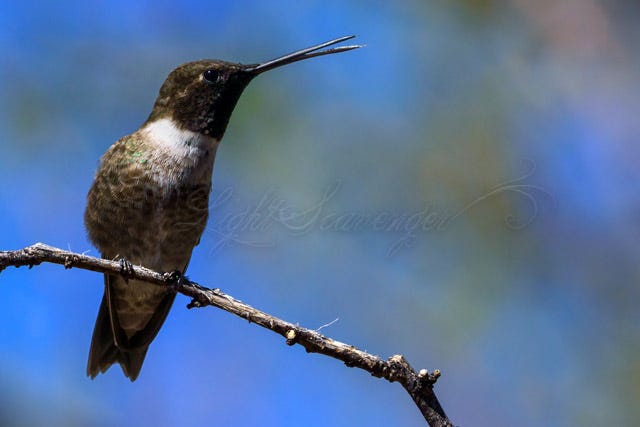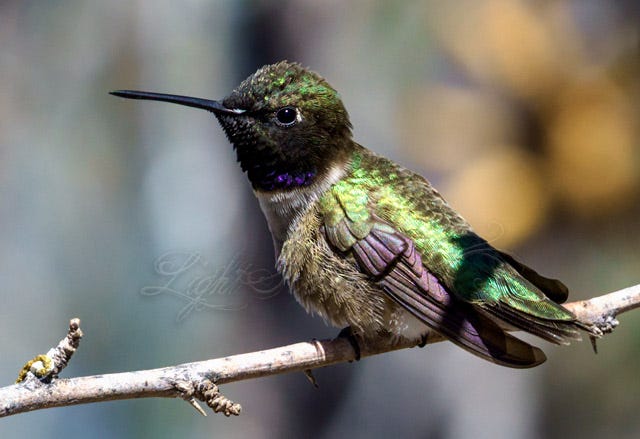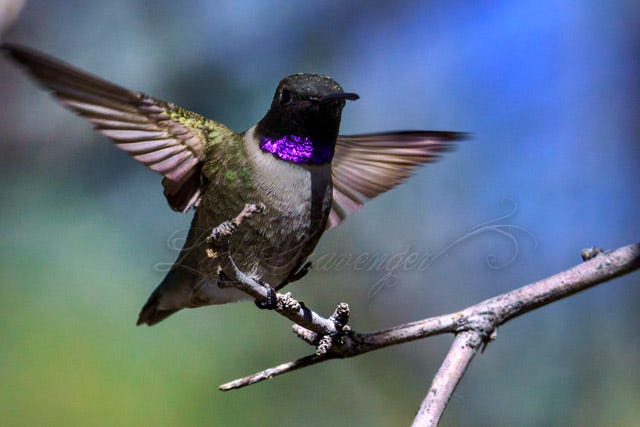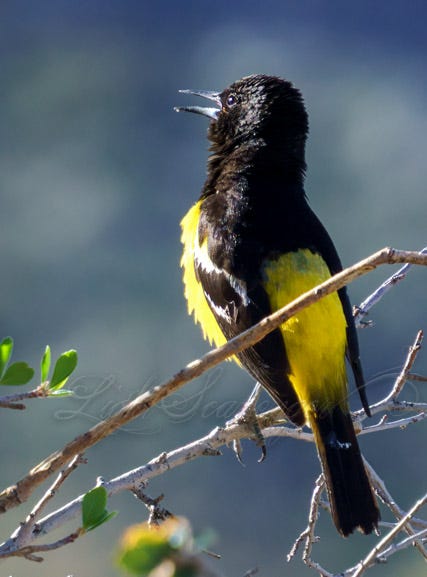I hung out with some of the hummingbirds near the Bosque del Apache Visitor Center last month. They were typically flighty at first but, after a while, apparently got used to my presence. They’re fascinating critters to watch; always alert and extremely playful.
When the sun hit them just right, I could see their beautiful iridescent green back feathers … and a tiny hint of shiny purple at their throats.1
And when the sun was just right in a slightly different direction, I could see even more of their amazing purple throats.
Our special guest is a Scott’s oriole who, as far as I can tell, graces us with its presence only in May. It’s not only beautiful to see, it has a spectacular song as well.
Scott’s orioles tend to be extra-skittish (in my ever-so-humble opinion) so I felt lucky to get more than one decent shot of this particular bird.
As if that weren’t enough, I ran into a scrub jay later the same day. They’re year-round residents in my part of the world but they’re also rather skittish. And I almost never get to take a photo of their beautiful blue feathers with the sun on them.2
The photography gods were definitely smiling upon me that day. I also saw no fewer than four Sandia hairstreaks, all clearly part of this year’s brood.3
Last But Not Least: Thank You!!!
It’s hard to believe, even for me, but I’ve been sending out Everyday Magic more-or-less-weekly missives for four years now. Your oft-expressed appreciation of them — through your likes, written and verbal comments, and emails — is what keeps me going.
Thank you so much for having become such a kind and supportive community, particularly in this time of truly ugly social-media behaviors. However it happened, I feel extraordinarily lucky that each and every one of you found and subscribed to Everyday Magic. Thank you, thank you, thank you!
I think they’re black-chinned hummingbirds but definitely won’t swear to it. (Time for a reminder that I’m a photographer, not a biologist, so most of my IDs can’t be trusted.)
There are several different species of scrub jays in New Mexico. I believe this is a Woodhouse’s scrub jay but again, wouldn’t swear to it.
I understand that there’s only a single brood of Sandia hairstreaks each year; it shows up right around now. Apparently they go underground shortly afterward, overwinter, then reappear in or around March of the following year. They then mate, lay eggs, and leave their legacies to a new generation of butterflies.








Beautiful birds and excellent captures.
And thank you for the species specific info on the Sandia hairstreaks. New butterfly learning makes my day.
They are black chinned hummingbirds. I am not seeing very many of them this year compared to a few years ago. Lovely pictures.